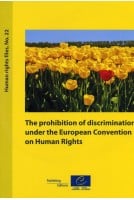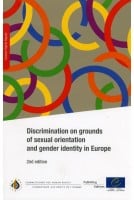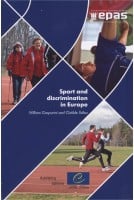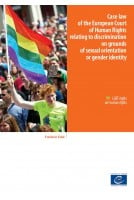



Protection against discrimination in Europe can be found within both EU and Council of Europe law. Both systems operate separately but they can influence each other through their case law.
European non-discrimination law, as constituted in particular by the EU non-discrimination directives, and Article 14 of and Protocol 12 to the European Convention on Human Rights, prohibits discrimination across a range of contexts and grounds. This handbook examines European nondiscrimination law stemming from these two sources as complementary systems, drawing on them interchangeably to the extent that they overlap, while highlighting differences where these exist. It also contains references to other Council of Europe instruments, in particular the European Social Charter, as well as to relevant United Nations instruments. With the impressive body of case law by the European Court of Human Rights and the Court of Justice of the European Union in the non-discrimination field, it seems useful to present, in an accessible way, a handbook intended for legal practitioners – such as judges, prosecutors and lawyers, as well as lawenforcement officers – in the EU and Council of Europe member states and beyond.
Published jointly by the European Court of Human Rights and the European Union Agency for Fundamental Rights (FRA)
To order a hard copy of the handbook or any other FRA publication






Protection against discrimination in Europe can be found within both EU and Council of Europe law. Both systems operate separately but they can influence each other through their case law.
European non-discrimination law, as constituted in particular by the EU non-discrimination directives, and Article 14 of and Protocol 12 to the European Convention on Human Rights, prohibits discrimination across a range of contexts and grounds. This handbook examines European nondiscrimination law stemming from these two sources as complementary systems, drawing on them interchangeably to the extent that they overlap, while highlighting differences where these exist. It also contains references to other Council of Europe instruments, in particular the European Social Charter, as well as to relevant United Nations instruments. With the impressive body of case law by the European Court of Human Rights and the Court of Justice of the European Union in the non-discrimination field, it seems useful to present, in an accessible way, a handbook intended for legal practitioners – such as judges, prosecutors and lawyers, as well as lawenforcement officers – in the EU and Council of Europe member states and beyond.
Published jointly by the European Court of Human Rights and the European Union Agency for Fundamental Rights (FRA)
To order a hard copy of the handbook or any other FRA publication
Please note that in accordance with our terms & conditions, PDF/epubs may only be purchased by private individuals.
